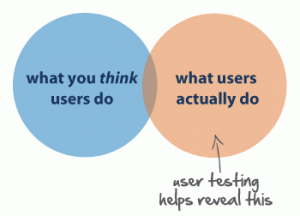Erik Qualman's Blog, page 531
July 15, 2015
The Payment Options That Drive E-Commerce in 2015

E-commerce represents huge business in 2015, with online sales in the UK set to reach £52.25 billion by the end of the year online sales in the UK set to reach £52.25 billion by the end of the year. With a number of leading brands also making the successful switch from the high street to the virtual world, we may soon see a time where traditional retailing becomes obsolete.
While this evolution may have been triggered by changing social trends and behaviours, it has been underpinned by innovation. This means that brands have been able to seamlessly launch their products and services online, while also effectively managing payments and facilitating secure transactions.
One of the single most important innovations in the world of online shopping has been the emergence of e-wallets. In a market led by the trail-blazing firm PayPal, these Cloud-based payment options can be accessed through secure, 128-bit encryption websites using a specific ID and password. While they have always enables customers to receive, transfer and withdraw funds electronically, the software behind them has recently been developed to enable instant financial transactions.
This has had a huge impact in the private sector, especially in burgeoning sectors such as the online gaming market. If you look at casino games platforms such as Casino.com and visit the payment landing page for example, you will see that the platform accepts multiple e-wallet service providers like Skrill. These types of payment solutions have blossomed on the back of improved software and advanced security measures, while they have successfully managed to capitalize on the initial efforts of the team at PayPal.
While technological advancement may have inspired an entire generation of seamless, electronic payments, however, the popularity of these solutions has a great deal to do with their level of security. When online gambling and virtual retail websites emerged during the mid to late nineties, many of them offered marginal protection to customers and 40-bit encryption. With all of today’s secure payment sites required to deliver 128-bit encryption and a robust SSL connection, consumers are given genuine peace of mind that their funds will be managed safely.
While there is little doubt that e-wallets have helped to enhance the online gaming and shopping experience, this evolution is likely to continue indefinitely. We now live in a world of m-commerce, for example, where businesses and virtual casinos in particular release a large number of apps to support their brand. As a result of this, the demand for virtual currency is continuing to rise and gain in credibility.
Take Bitcoin, for example, which is a relatively controversial payment method that is beginning to gain acceptance in the world of mobile commerce. It has certainly found a series of accommodating partners amongst the current collection of online casino brands, who often drive their gaming experience through a mobile platform. With Bitcoin becoming a preferred payment options for Android gamers, we could see an entire market develop for mobile currency.
[image error]
July 14, 2015
Pregnancies Developing More Social Networking

A couple of decades ago, women turned to a particular, very popular pregnancy book for information about pregnancy, before, during and after.
“What to Expect When You’re Expecting” was the pregnant woman’s bible. But now you’ve got a whole slew of information at your fingertips on the Internet.
And besides the information you can find on various sites, you’ve also got your social networking sites.
Use Social Media
When you have a specific question or curiosity about pregnancy, turn to social media.
The online social world is full of experts, regular people and your own social world of friends and followers to offer advice.
Among them:
Twitter – Twitter is great for finding specific information. If you want to read more about cravings or stylish maternity clothes, just hashtag the word or phrase. You’ll get a variety of great sources and Twitter can lead you to some informative blogs and other pages for information you may want to read on a regular basis;
Blogs – Speaking of blogs, sift through a little and find a blog that speaks to you. You’ll want to read something that goes along with your personal mindset. The lovely thing about reading blogs, that’s often overlooked, is the comment section. This is where you’ll find the real world stuff. See how others are dealing with whatever it is you’re reading about. You can find some great ideas and advice here;
Facebook – Use your own Facebook page to reach out to your personal friends. You can find great local places to shop for your new baby, doctors your friends trust or any other information you want to ask about. It’s a fun way to share your pregnancy as well.
Other Uses
Perhaps this pregnancy wasn’t expected. Perhaps it’s not even yours, but your teenage daughter’s.
As the following article, “Help! My daughter is pregnant” may not be the words you expected to put in a search engine, you can find a lot of help and answers this way.
If your family is considering putting the baby up for adoption, you can begin the search for answers online. This might be a tough route, something unexpected that will take a lot of love and support in your family.
You can use social media and other sites to find that support that you, your daughter and family may need at this time. Don’t forget about the real friends and support out there as well.
A word of caution, just like anything you are searching online, be it through social media or other informative sites, be careful.
Not only should you keep your information private, but also take what you read with a grain of salt. Social media is great, but don’t believe all that you read.
Sift through it and take what you need, and if anything is a big concern, talk to your doctor.
Good luck!
Photo credit: Image courtesy of Serge Bertasius Photography at FreeDigitalPhotos.net
[image error]
Walmart launches rival sale to Amazon’s Prime Day

USA TODAY – The Walmart vs. Amazon fight for retail domination just escalated.
Not one to let Amazon steal the sales spotlight, Walmart will launch a rival sale Wednesday to Amazon’s recently announced Prime Day, including more than 2,000 online exclusive “rollbacks,” Walmart’s word for discounts.
The lower prices on items in categories including electronics, home, baby and toys will last 90 days, the typical time period for rollbacks, which Walmart usually has hundreds of at any given time throughout the year. Starting Monday, Walmart is also reducing the minimum order for free shipping from $50 to $35 for at least 30 days.
Walmart called out Amazon for making its lower prices on Prime Day available only to Prime members, who pay $99 a year to be part of the service that offers free two-day shipping and access to video streaming and music. In a blog post slated to go up Monday, Walmart plans to say that it is “standing up for our customers and everyone else who sees no rhyme or reason for paying a premium to save.”
“We just don’t believe you should pay a fee to get a better price,” said Walmart spokesperson Ravi Jariwala.
In addition to the rollbacks and lower free shipping minimum, Walmart also promises “some special atomic deals,” with more details to come later.
Last week, Amazon announced that Prime Day — scheduled for July 15 and billed as a blowout sale bigger than Black Friday — would be held in honor of the e-commerce company’s 20th anniversary. It will include thousands of deals, with new ones as often as every 10 minutes, says Julie Law, an Amazon spokesperson.
Walmart has been going up against Amazon on multiple fronts recently as the retailers compete for customers and sales. In May, Walmart said it would start testing a Prime-like service this summer, offering unlimited, free three-day shipping to customers for $50 a year.
While Walmart has been America’s dominant retailer for decades, crushing other chains like Kmart and threatening local grocery businesses as it expanded its fresh and frozen food offering, it’s been playing catch-up with Amazon when it comes to the Web.
“Amazon has kind of turned the tables on Walmart,” says Brian Yarbrough, consumer research analyst with Edward Jones. “They’re the biggest in the world and the best. Walmart’s problem is they’re struggling to grow traffic in their stores. They’re trying to gain new customers and show that they can be a force online.”
Walmart saw foot traffic in U.S. stores fall for about a year before trending back up during the most recent holiday shopping season. As of the first quarter, foot traffic was up 1% in U.S. stores.
Other retailers are also trying to drive customer traffic with Black Friday-inspired sales planned for the summer, a trend that’s been going on for several years. Target’s “Black Friday in July” runs through today and included more deals over more days than ever, according to Target spokesperson Amy Joiner. Target has been doing a summer Black Friday sale since 2010.
Best Buy has a Black Friday sale planned for July 24-25, the third year it’s co-opted the holiday season shopping moniker in warmer months.
While the idea of turning Black Friday into a year-round sale may not be new, those words still push people to shop on days they otherwise wouldn’t, says Kathy Allen, a spokesperson for the National Retail Federation.
“If you go to Target right now, are you going to buy a Christmas gift?,” she says. “Probably not. (But the words) resonate as deep discounts and a day to get great deals on an assortment of products.”
Article by Hadley Malcolm for USA TODAY
[image error]
How Adobe Programs Can Help Students

Art has always been a huge part of my life. It has influenced me in ways that I never would have imagined and brought me to the place I stand right now in my life. I am a college student studying graphic design which I hope to be turning into a career within the next year. Technologically speaking though there have been major advances to the art world by merging with the digital world.
Using Adobe programs such as Photoshop, Illustrator and InDesign has made being a graphic designer simpler then every before. Art students can really benefit from these programs because they are easy to learn and their soul purpose is to help you, the designer TO create beautiful and stunning work.
Using Adobe programs at first may seem a bit overwhelming because they all have so many different abilities but after a few weeks it gets easier to navigate and use. My personal favorites are Illustrator and InDesign. Illustrator is the easiest and most effective way for me to create logos and images. I love the layout and placement of all the tools. InDesign is another of my favorites because it is used mostly for typographical projects which is my jam. Photoshop is also great, the layout is nice, but I feel the tools can be a bit cramped. Photoshop is great for when you want to alter photos and create 3D designs.
When using these programs, learning all the basic keyboard shortcuts is very important. They help to get the job done faster and more efficiently.
I know for me, personally, these programs have help me to create unique art that stands out above the rest. I would definitely recommend buying Adobe software and learning to use it if you plan on being an art major, especially in graphic design.
It will take a little bit of time to learn how to use all the tools and shortcuts but if there is a will, there is a way! Don’t sell yourself short, you’ll thank yourself in the end.
[image error]
July 13, 2015
Satoru Iwata, Nintendo Chief Executive, Dies at 55

The New York Times – Satoru Iwata, who as chief executive of Nintendo oversaw the introduction of gaming systems such as the Nintendo DS and the Wii, died on Saturday, the company said in a statement.
The statement said the cause was a bile duct growth. He was 55.
A former video game development star, Mr. Iwata was appointed the president of Nintendo in May 2002 and became the chief executive of Nintendo of America in June 2013, the company said.
He was the first chief executive to come from outside the Yamauchi family, which founded the company in 1889 as a manufacturer of playing cards and ran it until Mr. Iwata was appointed.
At the start of Mr. Iwata’s tenure, Nintendo, long a leader in home gaming systems, was fending off fierce competition by rivals like Sony and Microsoft. Under his watch, the company surged ahead with the release of the Nintendo DS, a hand-held gaming system, the popular Wii home gaming console, and Amiibo, a line of interactive toys.
But the company struggled to adapt to a changing video game business and resisted the industry trend to develop games for smartphones and tablets, preferring to stick to a more traditional approach of designing games to be played on their own hardware.
It did reverse course in March, but Mr. Iwata said then that the company remained committed to producing its own game platforms. It had planned to share more details about a new system, code-named NX, in 2016.
“For us to create unique experiences that other companies cannot, the best possible option for us is to be able to develop hardware that can realize unique software experiences,” Mr. Iwata told Time magazine in March.
As a former developer, Mr. Iwata displayed a fluency in the language of gaming and an ease with young developers that was a change from his predecessor, Hiroshi Yamauchi, who led Nintendo for 53 years while professing not to understand video games.
Mr. Iwata first got his start in video games as a contract programmer for HAL Laboratory, a game developer that works closely with Nintendo. The company, which Mr. Iwata later revealed was named because each letter is one ahead of IBM, gave him his first experiences creating games.
Over the 1980s, Mr. Iwata worked on a number of the company’s biggest titles. He became company president in 1993, just after he helped put out the first installment of the Kirby franchise, Kirby’s Dream Land.
The game, which features a puffy, pink protagonist who gobbles up enemies and spits them out as projectiles, became a hallmark of casual gameplay for the mobile game device well before the era of smartphone games.
Similarly, simplicity and ease of use were the driving forces behind the motion sensor technology that made the Wii console so popular.
Mr. Iwata continued to head HAL until he moved to Nintendo in 2000. During the time he presided over a number of key titles including the release of Super Smash Brothers, a game which pitted Nintendo characters like Super Mario and Link from the Legend of Zelda against each other in fights. He also advised on the creation of early Pokemon games for the Gameboy.
Known for pushing back against complicated and expensive video games,Mr. Iwata quipped at a 2006 conference that had Tetris been introduced then, it would have required better graphics and a film deal to be feasible. During the same speech, Mr. Iwata gave a sort of coda on his views on gaming: “Video games are meant to be just one thing. Fun. Fun for everyone.”
A series of interviews about the development of Nintendo products that Mr. Iwata conducted with the company’s employees revealed an easy, amiable camaraderie and were peppered with jokes and teasing. It was published to the Nintendo website under the title “Iwata Asks.”
“Since I myself come from a development background, I think I understand the minds of developers better than most executives,” Mr. Iwata said during one exchange, when asked about his relationship with employees. “I think the fact that I have been centrally involved in the creation of Wii is the biggest factor in explaining why my staff and I understand each other so well.”
Mr. Iwata was born on Dec. 6, 1959. He was a much admired figure throughout the games business, and tributes to him poured onto social media on Sunday as word of his death began to spread. Peter Moore, the chief operating officer of Electronic Arts, said in a Twitter message: “What a terribly sad day. Iwata-San was such a gentleman. Huge loss for the industry.”
Philip Schiller, the senior vice president of worldwide marketing at Apple, posted to Twitter: “He will be missed by many.”
“There are CEOs who make a difference to the lives of the people,” Min-Liang Tan, chief executive of Razer, a maker of games hardware and peripherals, said in a Twitter post. “Satoru Iwata was one of the few who did.”
In one interview posted to “Iwata Asks,” Mr. Iwata explained that his drive to expand Nintendo’s game offerings and user base was motivated by more than the lure of making money or beating competitors. While those things mattered, he said, he was also driven in part by a desire to improve “the position of video games in society.”
“I believe that if we don’t make moves to get people who don’t play games to understand them, then the position of video games in society will never improve,” Mr. Iwata said. “Society’s image of games will remain largely negative, including that stuff about playing games all the time badly damaging you or rotting your brain or whatever. If that happens, then even people who enjoy games will start to feel a strange guilt when they play them.”
Article by Liam Stack for The New York Times
Thumbnail from Shutterstock
[image error]
Social Media Can Bring You Home to More Value

Have you ever felt that when you look around your home, you see tons of repairs, updates or re-dos that it needs? But where is that money going to come from?
Updates, re-dos, and repairs can be expensive, and it seems that there’s always somewhere else that the money needs to go.
However, there are many changes you can make that won’t cost tons of money, in fact, they can actually cost very little. And social media is the place to find lots of these inexpensive things to do.
So whether you are planning on selling your home, or staying, there are things you can do.
As the following article looks at, here’s a look at some of these inexpensive changes that will increase your home’s value:
Paint a room – Paint can date, or update, your home. Perhaps you’ve got a color in your dining room that you loved 10 or 15 years ago, however, now it’s quite dated. You can repaint for not much more than a gallon of paint and a few rollers. Maybe enlist some friend or family help, or take it on yourself. Painting is a quick, inexpensive fix that will really make a difference.
Change out cabinet hardware – Maybe you’ve grown used to the knobs and pulls on your cabinets. Maybe you hate them. Either way, by replacing them, you can have an instant, fairly inexpensive update.
Declutter – This one won’t cost you anything, and you could even make some money if you sell some of the things you’re taking away. Look around on shelves and table tops. Do you have too much? What about on your walls? Pictures everywhere? Decluttering sends a more serene look and makes everything look more spacious.
A front door redo – Whether it’s a new coat of paint, new hardware or a new door itself, make sure your front door looks great. Even if it’s just for you, coming home and loving the look is a great way to welcome anyone.
Where do you learn how to do these things? Social media, of course!
Among the sites to zero-in on:
• Pinterest – The royalty of home fix its – you can find so much information on Pinterest about re-dos, repairs, and updates, DIY and inexpensive.
• YouTube – For step by step tutorials, go to YouTube. You can learn tricks of the trade and how to do things yourself for a fraction of the professional’s cost.
• Blogs – DIY is one of the most common blog topics on the Internet. Whether you want shabby chic, modern and cool or just learn how to paint a room, check out some DIY blogs.
Social media can be your best friend when it comes to improving the look and value of your home.
Check out some social media for great inspiration and how to.
You’ll soon be in love with the new look of your home!
Photo credit: Image courtesy of radnatt at FreeDigitalPhotos.net
[image error]
July 10, 2015
Testing your Website Content – Some Practical Advice

It really is all about user experience. And user experience is bound up into two elements – usability ease and content quality/relevance. You may have great ease of navigation, but understand this: a visitor comes to your site for information, and that information is housed in your content. If the information does not satisfy a visitor immediately, he will leave and never come back. If you want that visitor to stay, then you need to conduct some usability testing related to your content.
Defining Usability Testing
Usability testing has typically been utilized to test all aspects of a website design, ideally during the actual design phase. Such things as user ability to learn the design, to perform tasks with the design, and to remember the design after a period of absence, can then drive decisions about design changes that will enhance the overall user experience.
Usability testing for content is a “horse of a different color,” however, because it will actually test far more subjective elements of the website. You are looking to fully evaluate your content, both with very specific questions about where information is housed and what visitors may be asked to do, to more evaluative assessments relative to the quality, readability, and usefulness of the content on each page. Yes, you certainly will ask specific content questions, but you will also be asking other questions that have more to do with evaluation than specific details and that will give you a solid understanding of the revisions and refinements you may need to make, in order to keep a user on the site once s/he gets there.
Finding the Right Testers
Of course, you have a demographic profile of your target market – age, socio-economic status, urban/suburban/rural, possibly general leanings on political, economic and social issues, and any other factors that you believe to be important when considering who is a potential consumer. But if you really want a valid test, you will go deeper than this.
You will look for those individuals within your demographic who have actually been doing some research on the product or service you offer, who have already purchased or who are considering purchases within your niche. How do you find them? You use some traditional methods (social media, offices on university campuses, etc.) and you use some sophisticated tools that are now available. You may spend some money for the analytics, but this is not the time to “Cheap Charley” the process. If you don’t spend the time and the money now, and conduct the most valid study you can, you will be a bit like a restaurant that customers come to for barbeque and walk out when they discover that lasagna is the specialty. And to get these participants, you may have to pay them more than what you consider the “going rate” – that’s just a reality.
Use a Moderator
Usability research that only tests the design elements involves very short tester experiences. Once the testers have their tasks, they perform them quickly and it’s all over. Not so with content testing! You are asking users to spend more time, and that time needs to be “supervised” by a moderator who can perform several important functions as the testing process proceeds. Among these functions will be to communicate as the periods of silence get long, to ask questions, and to monitor the user’s activity. Without a moderator, users will tend to speed up and fail to perform adequate testing. They need regular contact and encouragement. They need to be asked to “think out loud” as they pour through pages and pages of content, and the moderator can ask them to explain their actions and to give their thoughts/opinions about what they are reading. While testers may be told to “think out loud” in the beginning, they forget, and the moderator is there to remind them and to encourage them to be thorough.
Devising the Questions
If you were in the education profession, you would understand the concepts of close-ended and open-ended questioning. When teachers want to assess students’ ability to recall factual information or to test for their comprehension of content, then they ask close-ended questions. There is only one right answer. When they want students to think critically, however, they will ask open-ended questions – those that have no single right answer. As you run testing of content on your site, you will need to do the same thing. You will, of course, have close-ended questions – what are the operating hours of the business? How do you sign up for the email newsletters? These question will test how easy it is to find this information. The open-ended questions, however, are a bit more difficult to devise. These questions will be more evaluative in nature, and will require lengthier feedback responses from your testers. As you design your open-ended questions, be certain that you are getting at the following feedback from your testers.
What is the level of quality of your content? Quality is quite subjective, of course, but if you have the right testers, then their comments are what matter, not your thoughts and beliefs. You may believe that you have great content and be sorely disappointed when your testers say “not so much.” Just remember, the content is for the user not for you!
What is the level of readability of your content? People do not read web content in the same manner that they do other text. They scan it, looking for key words or phrases that relate to the information they seek. There is an entire body of research out there that relates to eye movement on a page of content, and it will be important that you study that if you are going to place content that results in good “readability.” Check out http://www.tobii.com/eye-tracking-research/global/research/usability/ for more information relative to eye-tracking and usability studies. This stuff is not only interesting but really important. It should drive what content you place where on your pages.
What is the usefulness of your content? Again, if you have the right testers, and they have already demonstrated an interest in the product or service you offer, then they ought to be able to comment on how useful your content is to their wants and needs, and you should be able to take that feedback and use it to revise and refine your content.
What is the ease of understanding of your content? Hopefully, you have already tested your content using any of the many readability scales now available, and, based upon your demographic, you know the age level for which you are writing. Now comes the real test. Do your actual testers find it readable?
Is the content engaging? Did the testers find it interesting enough to them to read in more detail, or were they happy just to continue to scan. If so, you may want to consider a more creative content writer as you make plans to revise and re-write.
Think About Comparative Testing
You can do two things here. Once your tester has completed the usability test of your content, ask him/her to conduct a Google search for your product or service and read through the content on that competitor’s site, answering the same questions as you posed for you site. Or, pick a competitor and direct the tester to that site, have them read that content, and provide a personal evaluation of how yours “stacks up” to theirs.
Content Testing As You Go
Just as quantitative usability studies on you site design occur during the development stages of that design, you should also consider doing the same with the qualitative studies on your content. If you can do this in stages, as each page is developed, you will save yourself the frustration of a much longer revision and re-write if you wait until the very end to have it all tested at once. Revising content along the way, based upon the results of your testing will also help you to design the content that is still to be written.
Content Testing is Relatively New
Quantitative usability testing has been around for a long time, and it is really nicely refined now, so that it gives really valid data on site design. Qualitative testing on content, however, is a newer “baby” and it will continue to become more sophisticated as refinements in strategies and techniques are developed. Still, the information that you can gather from a well-defined and carefully designed content usability study using current methodologies can reveal critically important information.
If you really want to pursue content usability research further, there are a couple of places to go. The Nielson Norman Group has been involved in usability testing or a long time, and they hold regular seminars, webinars, and workshops on content usability testing. Another individual who is quite accomplished in this area is Ginny Redish. She is a specialist in content writing and has many suggestions for content usability testing as well.
[image error]
IBM Discloses Working Version of a Much Higher-Capacity Chip

The New York Times – IBM said on Thursday that it had made working versions of ultradense computer chips, with roughly four times the capacity of today’s most powerful chips.
The announcement, made on behalf of an international consortium led by IBM, the giant computer company, is part of an effort to manufacture the most advanced computer chips in New York’s Hudson Valley, where IBM is investing $3 billion in a private-public partnership with New York State, GlobalFoundries, Samsung and equipment vendors.
The development lifts a bit of the cloud that has fallen over the semiconductor industry, which has struggled to maintain its legendary pace of doubling transistor density every two years.
Intel, which for decades has been the industry leader, has faced technical challenges in recent years. Moreover, technologists have begun to question whether the longstanding pace of chip improvement, known as Moore’s Law, would continue past the current 14-nanometer generation of chips.
Each generation of chip technology is defined by the minimum size of fundamental components that switch current at nanosecond intervals. Today the industry is making the commercial transition from what the industry generally describes as 14-nanometer manufacturing to 10-nanometer manufacturing.
Each generation brings roughly a 50 percent reduction in the area required by a given amount of circuitry. IBM’s new chips, though still in a research phase, suggest that semiconductor technology will continue to shrink at least through 2018.
The company said on Thursday that it had working samples of chips with seven-nanometer transistors. It made the research advance by using silicon-germanium instead of pure silicon in key regions of the molecular-size switches.
The new material makes possible faster transistor switching and lower power requirements. The tiny size of these transistors suggests that further advances will require new materials and new manufacturing techniques.
As points of comparison to the size of the seven-nanometer transistors, a strand of DNA is about 2.5 nanometers in diameter and a red blood cell is roughly 7,500 nanometers in diameter. IBM said that would make it possible to build microprocessors with more than 20 billion transistors.
“I’m not surprised, because this is exactly what the road map predicted, but this is fantastic,” said Subhashish Mitra, director of the Robust Systems Group in the Electrical Engineering Department at Stanford University.
Even though IBM has shed much of its computer and semiconductor manufacturing capacity, the announcement indicates that the company remains interested in supporting the nation’s high technology manufacturing base.
“This puts IBM in the position of being a gentleman gambler as opposed to being a horse owner,” said Richard Doherty, president of Envisioneering, a Seaford, N.Y., consulting firm, referring to the fact that IBM’s chip manufacturing facility was acquired by GlobalFoundries effective last week.
“They still want to be in the race,” he added.
IBM now licenses the technology it is developing to a number of manufacturers and GlobalFoundries, owned by the Emirate of Abu Dhabi, to make chips for companies including Broadcom, Qualcomm and Advanced Micro Devices.
The semiconductor industry must now decide if IBM’s bet on silicon-germanium is the best way forward.
It must also grapple with the shift to using extreme ultraviolet, or EUV, light to etch patterns on chips at a resolution that approaches the diameter of individual atoms. In the past, Intel said it could see its way toward seven-nanometer manufacturing. But it has not said when that generation of chip making might arrive.
IBM also declined to speculate on when it might begin commercial manufacturing of this technology generation. This year, Taiwan Semiconductor Manufacturing Company said that it planned to begin pilot product of seven-nanometer chips in 2017. Unlike IBM, however, it has not demonstrated working chips to meet that goal.
It is uncertain whether the longer exposure times required by the new generation of EUV photolithographic stepper machines would make high-speed manufacturing operations impossible. Even the slightest vibration can undermine the precision of the optics necessary to etch lines of molecular thicknesses, and the semiconductor industry has been forced to build specialized stabilized buildings to try to isolate equipment from vibration.
An IBM official said that the consortium now sees a way to use EUV light in commercial manufacturing operations.
“EUV is another game changer,” said Mukesh Khare, vice president for semiconductor research at IBM. To date, he noted, the demonstration has taken place in a research lab, not in a manufacturing plant. Ultimately the goal is to create circuits that have been reduced in area by another 50 percent over the industry’s 10-nanometer technology generation scheduled to be introduced next year.

A working sample of a chip with seven-nanometer transistors. IBM said it made the advance by using silicon-germanium instead of pure silicon. Credit Darryl Bautista/IBM
Article by John Markoff for The New York Times
[image error]
3 Things You Should Know about the Link Between Social Media and SEO

As Google continues to update its algorithms, SEO continues to change. What may have worked well five years ago is now something that can get you penalised. Nowadays, every SEO strategy has to consider website visitors as well as the search engines, and with social media being so popular, it’s vital to have a presence on the main sites both now and in the future. Want to know more about the link between social media and SEO? Keep reading to find out.
1. Social Media Profiles Appear in Search Engines
Although little is currently certain about whether social shares have an impact on your search engine ranking, what we do know is that social media profiles do appear in search. In fact, if you search for your company name, it’s likely that your Facebook and Google+ pages will both be on the first page of your search. On top of this, Google also shows information related to your company related to your Google+ page so even though you might find it a pointless network to sign up to, all digital marketing agencies will recommend you sign up for its benefits.
2. Social Media Websites Act as Search Engines
Traditionally when you think of a search engine, your first thoughts are likely of Google and Bing. However, lots of consumers will search for companies on social media networks like LinkedIn and Facebook. The same goes for sites like Twitter. People will search for hashtags to find brands so it’s definitely a good idea to be active on the main social media networks, fill them in with your business information, and share content using hashtags that people will search for. Just to give you a few figures:
YouTube gets roughly 3.7 billion search queries each month
Facebook receives around 1 billion search queries every day
Twitter handles 19 billion search queries every month
These are not searches you want to be missing out on.
3. Social Media May Become More Important
Although we don’t know for definite whether social media shares, likes and comments have an effect on SEO, it’s likely that things will change in the future. After all, these things all clearly show Google what people think of content, and their main aim is to design a search engine that users will find most beneficial. And, with things like guest blogging becoming less reliable, Google and the other search engines will need to find new ways to measure a site’s authority. Social signals seem to be the perfect way for them to do that. As a smart brand, you should continue to invest in your social media platforms so that you will be a step ahead of your competition in the future.
In addition to thinking about how social media benefits SEO, it’s also important to consider how much traffic you could gain from social media platforms. Whether the sites have an impact on SEO at the moment is debatable, but the traffic they can direct to your site is not.
[image error]
July 9, 2015
Tech fail! Explaining Wednesday’s 3 big computer errors

CNNMoney – Failures took down United Airlines, the Wall Street Journal’s website and even halted the New York Stock Exchange.
But it’s too early to blame hackers.
CNNMoney reached out to a dozen top technologists, and they all said the same thing: Based what’s known now, it’s highly unlikely to be the result of a coordinated cyberattack.
The key is that each failure is different in nature. Hacks typically exploit a single flaw to attack various entities at once.
United temporarily grounded all flights because of a problem in the way its own computers speak to each other.
The NYSE suspended trading due to an internal “technical issue” involving computers only at the stock exchange.
And WSJ.com went down because its computer servers weren’t responding quickly enough. They might just be overloaded.
These problems aren’t similar. Also, tech companies that — behind the scenes — analyze vast amounts of Web traffic say they haven’t spotted a coordinated attack.
United flights resumed nationwide after an hour. Someone with direct knowledge of the United Airlines situation told CNN its employees have investigated the computer glitch and determined the company wasn’t attacked.
“This was not the work of hackers at all,” that person said. “There was no hacking whatsoever, and there is no evidence of any connection to what is happening at the NYSE.”
The NYSE, which remained down midday Wednesday, also assured the public that hackers weren’t behind the shutdown.
“The issue we are experiencing is an internal technical issue and is not the result of a cyber breach,” the NYSE tweeted. “We chose to suspend trading on NYSE to avoid problems arising from our technical issue.”
WSJ.com was back up by Wednesday afternoon, albeit with a bare-bones website and basic formatting. The company didn’t say what caused the issue, however some speculated that the NYSE shutdown attracted a flood of visitors to WSJ.com, overloading the site’s servers.
What ties together all three failures? The companies involved are all business operations that rely on massive computer systems. Automated software is complex, sometimes involving millions of lines of computer code. All it takes is a single error — even misplaced text — to grind it to a halt.
“Increased dependence on undependable things allows for cascading failures,” said Joshua Corman, a cybersecurity expert.
Article by Jose Pagliery for CNNMoney
[image error]











